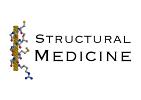
|
|
Research Interests
|

Serpins
Several groups within the Structural Medicine Division of
Haematology are carrying out a co-ordinated series of
studies on the way in which the serpin family of serine
proteinase inhibitors undergo changes in fold.
These conformational changes have been adapted during
evolution to allow the specialised modulation of function
in individual members of the family, but carry with them
the risk of vulnerability to mutations resulting in a series
of acute and chronic disease processes.
More information
Protein Crystallography: Methods and and Application to Study of Pathogenesis
Our group carries out research in two areas of protein crystallography: theory, and application to medically-relevant problems.
In choosing proteins to study, we focus on potential drug or vaccine targets, the structures of which can be
exploited in the development of new therapies.
For example, we have worked on the Shiga-like toxins that are responsible for the
food poisoning caused by certain strains of E. coli, in particular O157:H7. Our work is unravelling
the mechanism by which these toxins recognise and bind to target cells, and is leading to new
therapies based on intercepting the toxins before they can act.
We are also developing new and more powerful methods for solving and refining crystal structures.
We focus on the understanding of probability distributions relating the structure factors that arise from
the diffraction experiment. A detailed understanding of these probability distributions underlies
new developments in maximum likelihood methods, which are having a great impact on the speed
and quality of structure refinement, and on the solution of X-ray crystal structures by both molecular replacement and experimental phasing.
More information
|

